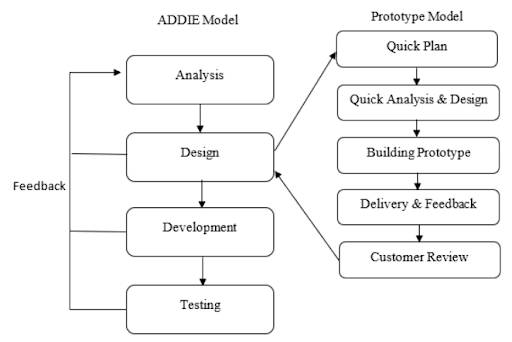The Roadmap To Designing Courses for Your Business

Image Source: Josefa nDiaz | Unsplash
E-learning (recorded) or live online has become a trend, and with the pandemic crisis, the urge to have e-learning courses or live online in all fields has dramatically accelerated. Live online or prerecorded e-learning courses have become an effective means when doing learning courses. With new jobs coming up every day, there is a rise in the need to obtain new skills that the academy will not be able to develop and provide as the pace in the market continues to quicken.
Moreover, live online or prerecorded courses make it possible for everyone to learn new skills, techniques, and tools from any country. Meanwhile, people get to learn new skills other than the ones intended by the course, such as communicating with other people from different cultures with varying perspectives and ideas.
How to design an effective course
The important question to address here is how can we design an effective course whether it is a live or prerecorded one? Currently, this field has become very competitive, and various organizations in different industries are developing their own courses. The answer to this question starts by creating an effective diagnosis of the target market.
Before instructional designers (ID) or content developers rush in by designing courses, they need first to have enough data explaining the current status of the market and the problems their courses will be solving. Companies need to differentiate themselves from competitors when they design similar courses. In other words, why should they choose your course rather than a competitor’s?
- Stage 1: Market Diagnosis
The first stage of creating a library of e-learning courses is conducting market research; specifically, a gap analysis to have a better understanding of the gaps in the market and to update the profile of your customers. Moreover, companies should be updating their competitive analysis every now and then to be able to differentiate themselves. Feedback from previous training could be useful and help in designing the right questions for your market research. After gathering and analyzing data, companies will be able to spot the current needs of their target market.
- Stage 2: Preparation
During this stage, the ID or content developers should brainstorm the different courses they need to develop. The brainstorming sessions could include different stakeholders across the organization as long as their input is relevant to the sessions. Then, prioritization according to the available resources is crucial at this stage. It goes without saying that the course design should be aligned with the overall business strategy; this is a vital criterion that should be considered during the brainstorming sessions.
- Stage 3: Implementation
In the third stage, the ID or content developers start to develop the course chosen during the previous stage. The ID decides on the methodology for developing the course and its learning outcomes and objectives, such as Bloom’s taxonomy for the learning outcomes and ADDIE model for developing the main content of the course. The ID also gets to decide based on the nature of the course and the target market, the type of practical work (such as exercises, discussion questions, case studies, quizzes, exams, etc.) that will be included in the course, as well as the methodology of the questions used. Consequently, it is recommended to have a well-defined and detailed process for this, from the point the course is designed until it reaches the testing phase.
Companies do not have to follow the same exact ID model that is commonly used by other companies such as the ADDIE model. However, they could develop their own model according to the course type they are designing, such as the model suggested in Figure 1 below from the study of Mustafa Saeed and his team (2019).

Figure 1: Image Source: ResearchGate
The model in Figure 1 incorporates a prototype model with the traditional ADDIE model to design e-learning courses for students. It suggests placing the prototype phase after the designing phase or as an extension. It also suggests applying the iterative flow through which one or more of the stages can be repeated during the development process.
The main advantage of this model is that it incorporates the customers’ feedback within the design stage. Despite the fact that this model was developed for e-learning courses, the same concept could be used for prerecorded or live online courses.
Finally, the implementation phase involves choosing the right tools and technologies for delivering the course (whether offline or live online). Needless to say, there are various factors that should be considered in choosing the appropriate tools and technologies (hardware and software). These can include the type of learning platform as well as the security and privacy measures taken to protect the course shared with the participants whether it is done through a pre-recording or live online.
- Stage 4: Prototype
In this stage, the ID finalizes the course and is ready to test it. The ID starts this stage by transferring the course knowledge to the trainer, including all the practical work (exercises, case studies, etc.). The ID may include the feedback and the comments of the trainer before testing it. From there, the trainer could create some kind of simulation with a group of people to test the whole content of the course and gather feedback for improvements. This phase is vital because ID and developers will be able to tackle any problems with the content and the different technologies used.
- Stage 5: Launching
This is when the course is launched in the market after deciding on the appropriate price of the course, as well as the time and place for conducting it. This stage also includes marketing the course(s) online through channels such as the company’s website and social media. It goes without saying that course competencies, learning objectives, and learning outcomes should be clear for the participants to help them decide whether the course is relevant to their field of expertise/interest or not.
- Stage 6: Evaluation
Finally, the company evaluates the effectiveness of its course. This could be done by gathering feedback from the participants by the end of the course to assess the whole learning experience from the moment they sign up for the course until they receive their course certificates. This data will definitely help companies in improving their course and the whole learning experience.
In conclusion, there is no one way that would work for all. Companies get to design their own processes based on certain elements such as the nature of their course, target market, and industry trends. However, this article discusses the common building blocks that are essential for the successful design of a course. Finally, below are a few tips that could help in designing a course effectively:
- Keep yourself up-to-date with the current industry and market trends.
- Be aware of new tools and techniques for a better e-learning experience.
- Decide on the competencies of each course before developing it to match your market needs.
- Assess your current instructional model used to identify areas that require improvements or other steps that need to be added to the model.
- Involve the input of the relevant stakeholders in the implementation and the prototype phases.
- Involve the participants’ expectations within your course. Companies, for example, can allow for discussions with the participants to know more about the course before the pay. This will also allow companies to have more data about the common expectations among different participants for future improvements.

